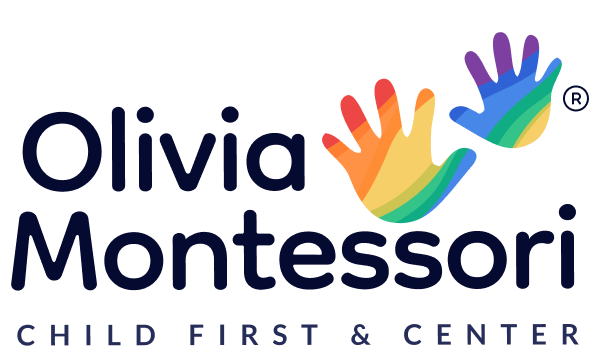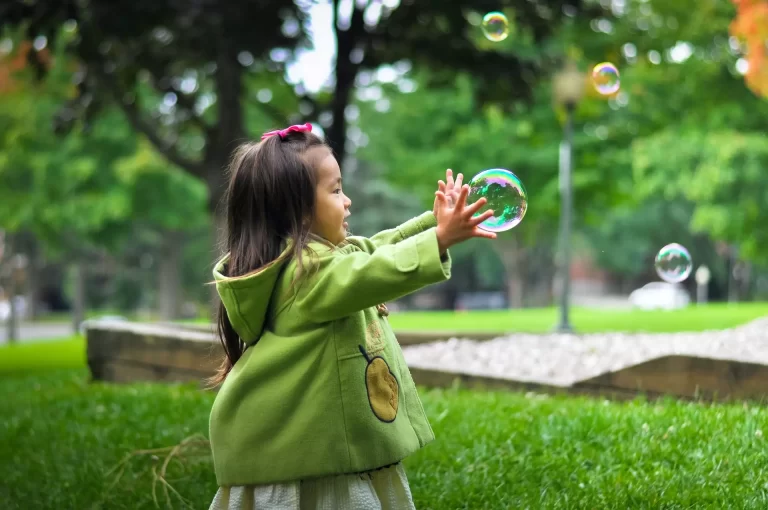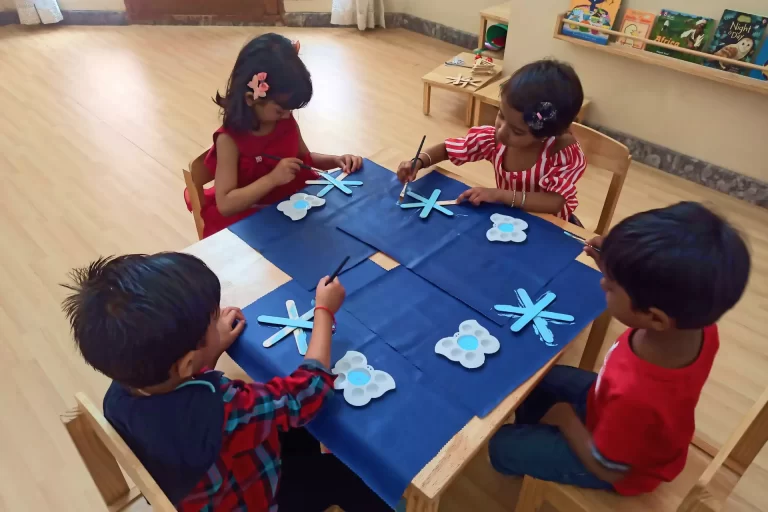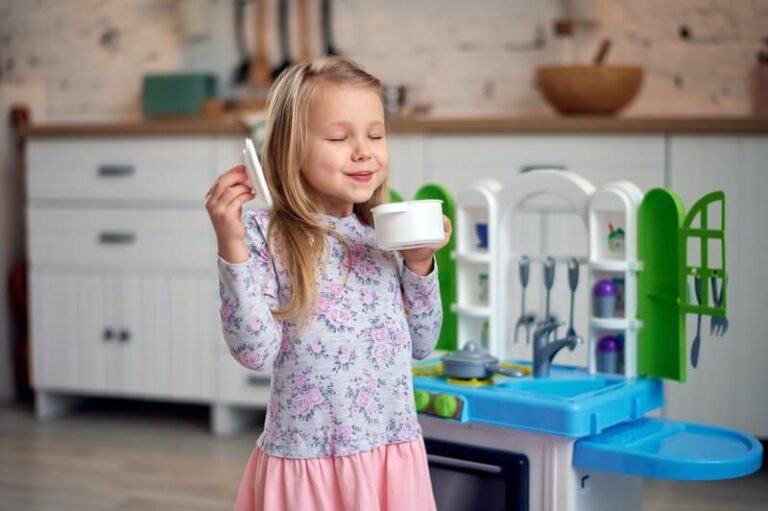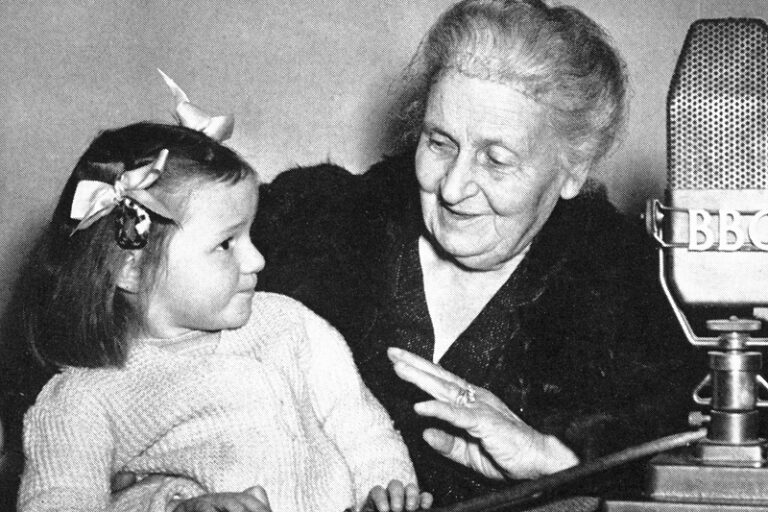What is a Prepared Environment as per the Montessori Pedagogy, why is it important and how does it benefit children.
All parents want to be the greatest parents and they wish to provide the finest environment for their children. But why a prepared environment? What makes an environment ideal or fine or optimal? We find the answers in Montessori.
Children need an environment that has been created with their growth and development in mind. It is our responsibility to provide children with supporting and responsive physical and psychological environments so that they encounter fewer obstacles as they embark on their journey of self-actualization.
Dr. Montessori stated the goal of the prepared environment in her book The Secret of Childhood as follows: “The first aim of the prepared environment is, as far as it is possible, to render the growing child independent of the adult.”
As a result, one of the core components of Montessori philosophy is the prepared environment. According to Dr. Montessori, the learning environment, as well as everything that the child comes into contact with should foster independent learning and exploration.
The “Prepared Environment” assists the child in the following ways:
- Independence
- Opportunity for self-learning and repetition
- Exploration
- Freedom of movement
- Holistic development of the child
The following are the main components of the Prepared Environment:
- Freedom: In a prepared environment the child is encouraged to have freedom of choice, exploration, movement, social interaction, and uninterrupted work. The children choose the work they want to do and the adult only acts as a bridge between the child and the environment, assisting the child only when necessary and not constantly correcting them, instead demonstrating how to do the work and then allowing the child to practice, repeat and figure it out for himself. This helps in the development of the child’s cognitive abilities of knowing, learning, thinking, and judging. As a result, aids his Intelligence, Confidence and Decision-Making skills.
- Structure & Order: Children relate to things around them through order. They internalize the external order of their surroundings which helps them develop a sense of connection with their environment as well as a sense of safety which results in better development. It’s important for the child to be able to relate to his environment; therefore, the environment’s order must be consistent.. This makes the child more comfortable to explore the material in the environment and helps him/her to establish a sense of belonging.
- Beauty: The environment in which the child grows should be conducive to learning. The setting, therefore, is prepared beautifully and simplistically, in such a way that invokes peace, tranquillity and harmony. In addition, the learning environment is also uncluttered and well-maintained.
- Nature and Reality: Children love nature and being outdoors. Nature inspires children. It is important to give real experiences to your child, take them to the parks, beaches and other outdoor environments, frequently. In a prepared environment, natural learning materials are used. Rather than synthetics or plastics, these materials include actual wood, metal, bamboo, cotton, and glass. The materials are real and child-size, so the child is able to work independently with the materials without becoming frustrated, and avoid relying on others for movement assistance. In such environments, the learning materials are specially designed, developed and placed on low, easily accessible shelves. In addition to child-height shelves, Montessori environments have child-sized furniture, fixtures, tools, and utensils. By keeping the environment child-sized and accessible, the Montessori classroom minimizes the child’s need for adult assistance and maximizes the self-regulated activity.
- Social Environment: The prepared environment supports social development by encouraging freedom of interaction. The adults in the environment foster in the children a sense of compassion and empathy for others. It’s important to have interactive conversations with children and include them in conversations. Refrain yourself from having a question-and-answer round conversation all the time with your child, we must treat them as an individual who has their own independent thought process system. Children look up to the adults around them and learn most from the people in their immediate environments. With the power of their absorbent mind, they are able to absorb everything in their environment without any filters. They cannot discriminate between good or bad, those in their environment must be mindful of themselves and focus on providing a rich culture to the child. Adults in Montessori schools serve as role models for children, encouraging them to be responsible adults.
- Freedom within limits: We want children to fulfill their needs by finding activities that interest them, challenge them and get them to do it again. When they repeat, they find concentration and when they find concentration, they come out calm, peaceful, and joyous. However, to obtain these aspects, a child requires the freedom to work on an activity that interests them, resulting in satisfaction of their needs. Because learning can only take place in an environment where people have freedom (to work, to practice, to move, to socialise etc). However, this environment consists of adults and the limits placed by them. These are natural limits that have evolved so that we function naturally and independently. These are not forced by adults. Example: Putting back activities to their original source, If a child wants to be a part of a group, he must learn to talk politely, he should be careful with materials, not hurt others, respect other children’s/siblings’ workplace etc. When there is freedom with natural limits, children develop self-discipline that is not imposed.
- Intellectual Environment: When the following criteria of the Prepared environment are met, the child’s full personality grows with his intellect, resulting in holistic development.
The old adage ‘you are shaped by your environment’ applies as much to children as it does to us adults. You can start shaping your environment in the ways we have covered above because it is our responsibility to prepare an environment that fosters all of the qualities we seek in the development of our child.
